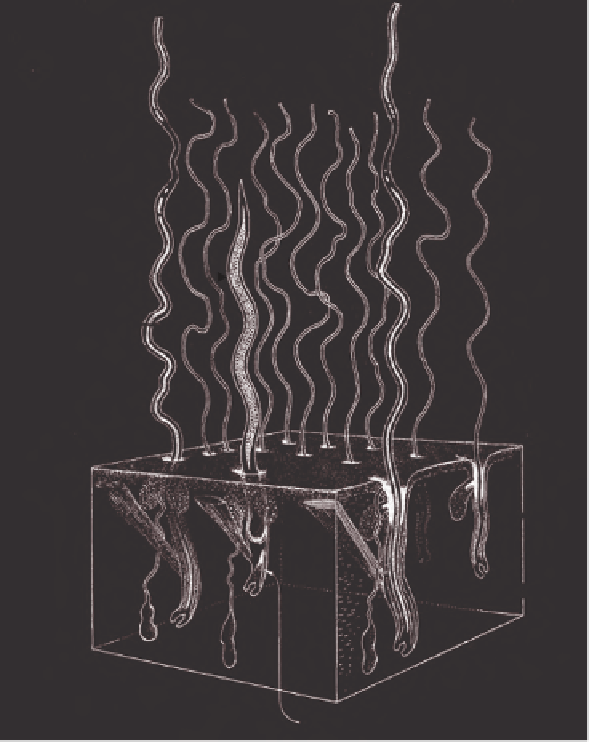Agriculture Reference
In-Depth Information
Kemp fibre
Mohair fibre
Heterotype
fibre
Muscle
Sebaceous
gland
Secondary
primary
follicles
Sweat
duct
Sweat
gland
Outer sheath
Inner sheath
Papilla
Figure 15.2
Simplifi ed drawing of
adult Angora goat skin (from Ryder
and Stephenson, 1968, courtesy of
Elsevier).
Trio of
primary follicles
Fibre regrowing to replace
the shedding kemp whose
brush end lies above.
Finally, it must also be emphasized that in the absence
of a new family of effective anthelmintics being brought to
the market, goat production systems will have to be refi ned
or relocated to reduce losses to internal parasites. Producers
are realizing that failure to be able to control parasites is
making it impossible to have a profi table goat operation in
some areas of the country. The business of vegetation
management and targeted grazing using goats (and sheep)
particularly to control fi re hazards and to eat plants that are
aversive to cattle could experience considerable growth in
the near term (Launchbaugh et al., 2006). Furthermore,
grazing toxic or undesirable plants will be made more
effective by selecting for improved genetics, using mixed-
livestock grazing, and providing supplements designed to
ameliorate the aversive effects of chemically defended
invasive or toxic species. The topics of parasite resistance
to anthelmintics and prescribed or targeted grazing are
discussed in greater detail elsewhere in this topic.
BIOLOGY OF FIBER GROWTH
Mohair fi bers are produced by cell division in primary (P)
and secondary (S) follicles in the skin of Angora goats
(Figure 15.2). The two types of follicles are distinguished
by their accessory structures. The P follicles each have a
sebaceous gland, a sudoriferous (sweat) gland, and an
arrector pili muscle. The S follicles have only a sebaceous
gland. Some S follicles produce more than one fi ber. The
central P follicles are fi rst observed on the fetal head about
40 days into pregnancy and spread across the body over
the next 20 days. During this time, two more P follicles
(laterals) appear on either side of the central P follicle thus
forming a trio group. After 80 days of pregnancy, S fol-

































